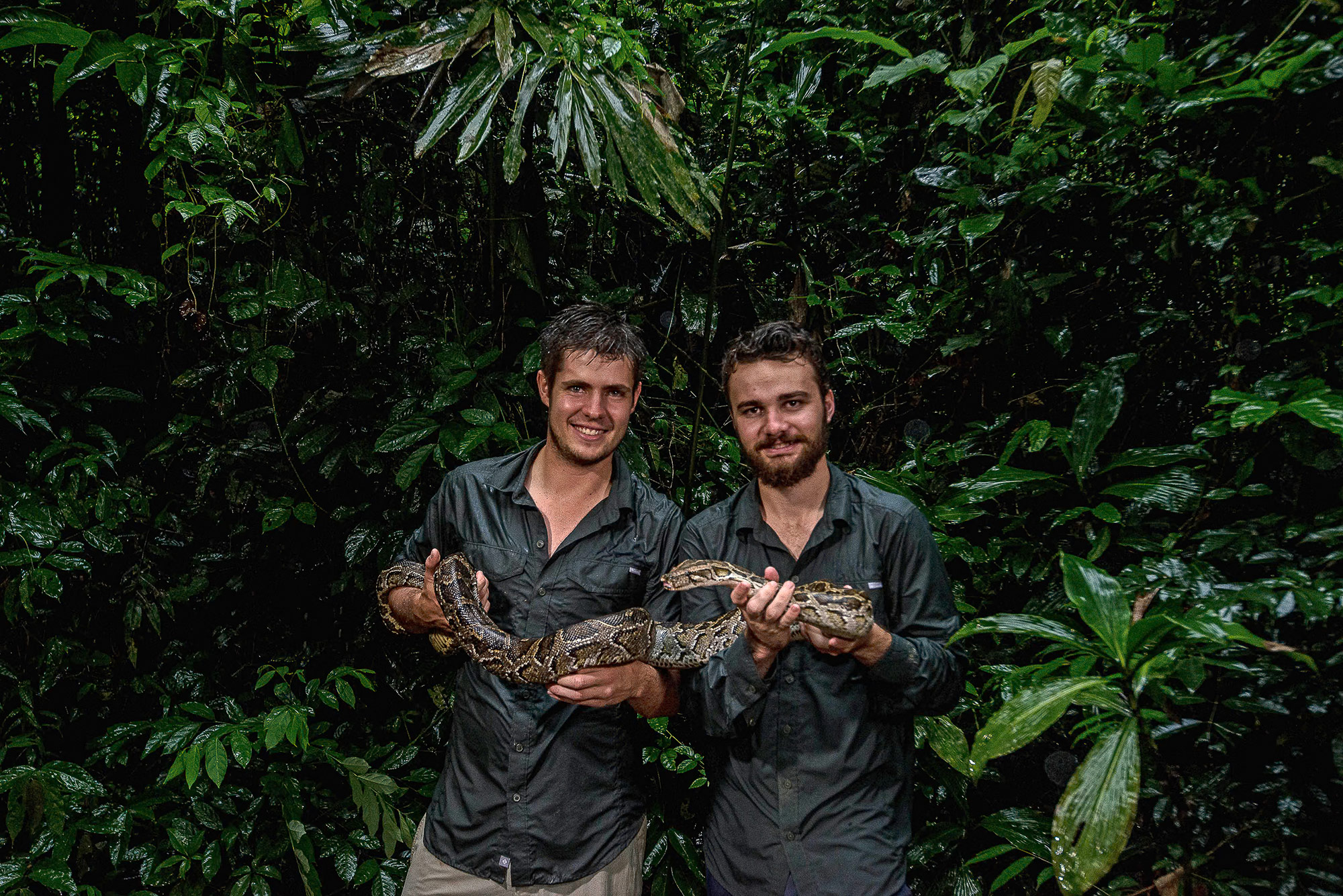The year 2024 marks 10 years since we first sent a field team over to Bangladesh to partner with the Bangladesh Python Project. Over the months of June & July in 2014, we provided the project with much needed monitoring equipment to assist with vital research of wild populations of Burmese python and the gorgeous Elongated tortoise.
The Burmese python (Python bivittatus), although a prolific pest species in places such as the Florida Everglades in the USA, is listed as a Vulnerable species in much of their home range. This decline in population numbers is what is being monitored and studied by the team, as they are in a constant battle of exploitation by humans and ongoing habitat loss which wreaks havoc on wild populations, putting immense pressure on both target species.
The project team employed a radio-telemetry study of Burmese python individuals in Lawachara National Park to help better understand their habitat use, home range, activity patterns and the effects of their relocation in a human-modified ecosystem.
To further assist with human-wildlife conflict, the team provides an outreach program to the local villages in order to educate them on the importance of this species survival. The program offers free snake removals & relocations to all of the local villages and helps to minimise financial loss due to stock predation, whether through compensation or prevention.
The Elongated tortoise (Indotestudo elongata) is now listed as Critically Endangered on the IUCN Red List, which makes conserving this species of utmost importance to the project. The team have initiated an intensive radio-telemetry monitoring study of released Elongated tortoises, tracking both resident and translocated individuals in Lawachara National Park to understand their home range, habitat use, survivorship and movement & activity patterns.
These slow-moving tortoises become easy targets for subsistence hunting, as locals easily capture them to sustain their families, and ultimately become a much needed, easily accessible food source. Population density levels of these tortoises in most of Bangladesh are now low enough that local extinctions are imminent, without much needed intervention and population reinforcement by organisations such as these.
While in Bangladesh, our field team assisted in finding and tagging a new python for the project, provided venomous snake handling training to the project’s staff members and undertook a number of snake calls from the surrounding villages. They also helped facilitate veterinary checks and the fitment of telemetry devices on captured individuals.
In the two weeks they lived within the confines of the Lawachara National Park, they helped document a number of significant species range extensions and even discovered 3 new reptile and amphibian species, sending the collected field data and specimens off to the National University of Bangladesh to be formally recorded and described.
We recently received an update with the organisation’s CEO Shahriar Caesar Rahman via LinkedIn, who shared an exciting update on the progress of the organisation and the further development of their vital research projects across the country.
Since our team made the trek to Bangladesh in 2014, the project has evolved into a fully-fledged conservation organisation, now known as the Creative Conservation Alliance, dedicated to ongoing, meaningful conservation of at risk species throughout South East Asia.
To date, the team have tagged and tracked 10 individual pythons within the study area, which will help to yield recommendations for python habitat protection and restoration, and contribute to the basic biological knowledge of the Burmese python species as a whole.
They have also successfully established the country’s first tortoise conservation breeding facility and initiated the first ever reintroduction of the critically endangered Asian Giant Tortoise (Manouria emys). They are also planning to initiate the first ever radio tracking study of the Russell’s viper (Daboia russelii) in human settlements. The information gained from this study will help mitigate human-snake conflict. This species was declared extinct in Bangladesh back in 2002, but has since come back from the brink, as populations recover across the country.
We are proud to have contributed to this organisation in some meaningful capacity and are excited to see what further conservation milestones are achieved by the team over the coming months. We are committed to finding ways to support this wonderful organisation long into the future.
For more information about the Creative Conservation Alliance and to help support the amazing work they do, please visit their website at www.conservationalliance.org.
Your help is greatly appreciated.
